Energy
TopDutch is energy. Located on Europe’s largest natural gas reserve, the TopDutch region is the main energy provider for the Netherlands and large parts of Western Europe. Today, the main focus of TopDutch is realizing the opportunity presented by the combination of green electricity and natural gas available. We are determined to be the Green Hydrogen Capital of Europe, making the transition from gray, via blue, to green hydrogen production, distribution and utilization. Here, we power a sustainable future.
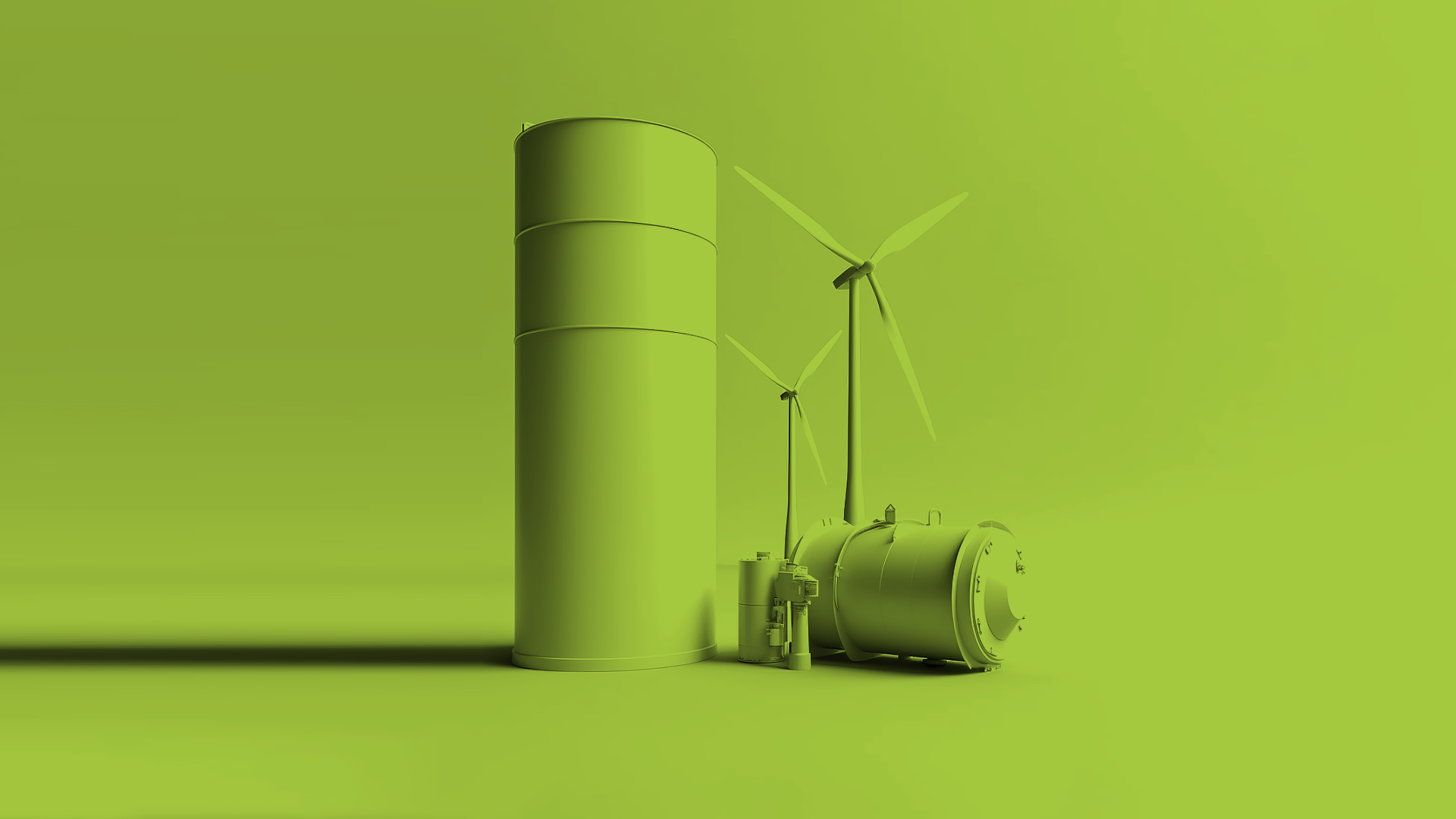
1. Largest natural gas reserve, best gas infrastructure in Western Europe and first to switch gases.
Built on Europe’s largest natural gas reserve, we’ve powered economies across the region for decades. Now, we’re splitting up with fossil fuels and instead investing in infrastructure, education and innovation for green energy.
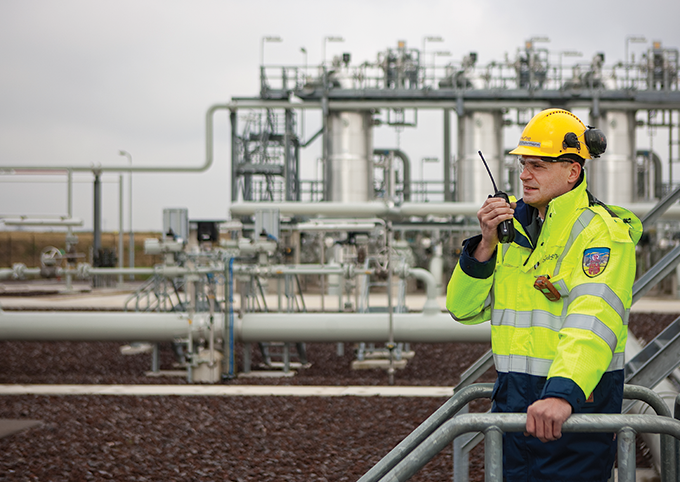
- A giant natural gas field was discovered in 1959 by the Nederlandse Aardolie Maatschappij (NAM) in the Northern Netherlands, which sparked the Dutch and subsequently the North-West European gas markets.
- It is the largest field in Europe, with original recoverable reserves of 2.7 to 2.8 tcm (95 to 99 tcf) – double that of the second largest field, in Norway.
Production started in 1963, after intense work on the construction of the required production facilities, building the national gas transportation network and adjusting tens-of-thousands of Dutch homes. We now have the best gas transportation network in Europe.
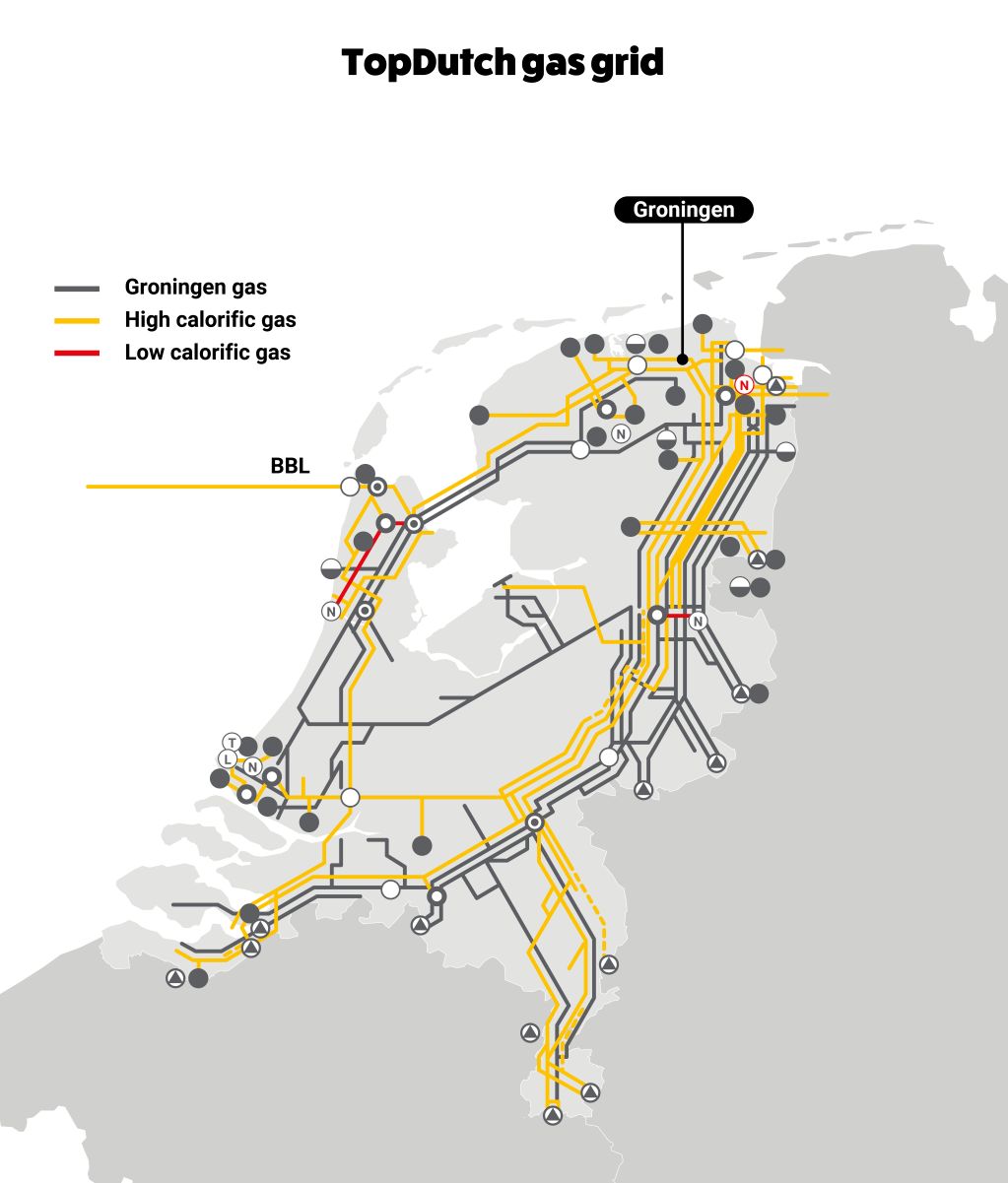
The extraction of natural gas induces earthquakes at a shallow depth, having a high impact on buildings and the safety of households in the region. The Dutch Ministry of Economic Affairs and Climate decided to conclude natural gas production in Groningen by 2024.
- Our regional gas network operator, Gasunie, will add carbon-neutral green gas to the mix of its current natural gas pipelines and switch to transporting green hydrogen, a transition that will be scaled by first transmitting natural gas based blue hydrogen, to its network.
- The redundant gas transmission network enables switching gases pipeline by pipeline, enabling the transition to both green gas and green hydrogen.
- We’re upskilling our more than 15,000 experienced workers from the domestic natural gas industry to train the talent needed for the transition.
2. The heart of Europe’s largest futureproof energy sourcing area.
Located at the heart of the North Sea’s coast, we will power Europe’s energy transition. We are investing heavily in on- and off-shore wind and solar farms, and our reliable cross-border power grid will transport green energy across the region.
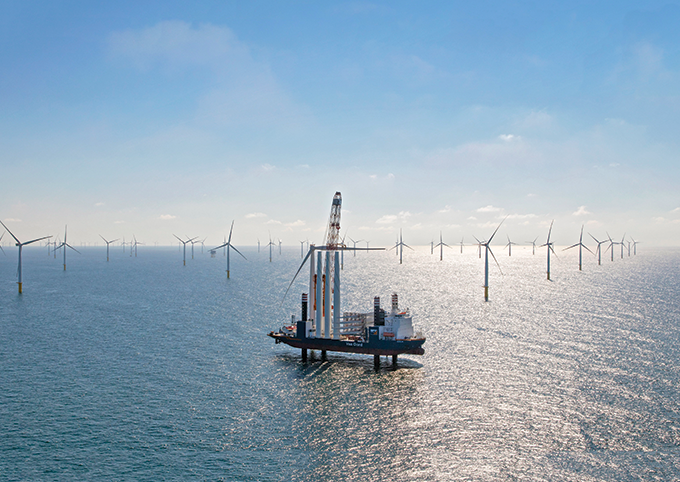
- The Netherlands, together with 8 other European countries, have pledged to expand offshore wind capacity to 120GW by 2030, and 300GW by 2050, representing €800bn of investment .
- In the Netherlands, this represents a target to raise our offshore wind capacity from 11GW (2023) to 21GW by 2030, reflecting about 75% of our current electricity consumption.
- Our culture of cooperation is leading joint infrastructure developments, with collaboration agreements with countries including the UK and Denmark meaning we will host Europe’s biggest cross-border electricity link connected to an offshore wind farm.
- The TopDutch region has a long history of energy production, and we have no intention of slowing down. Among the approximately 2,500 MWs of wind projects currently operational in the Northern Netherlands is Gemini 1 – one of the largest offshore wind parks in Europe – producing sustainable energy for 800,000 houses.
- We’re scaling-up fast. We will generate 12.2 TwH of on-shore wind and solar power by 2030. In addition to the existing 600 MW production capacity in wind parks off the TopDutch coast, we have plans for another three sites totaling 4,700 MW.
- Our ambitions, knowledge and experience in wind park construction, maintenance and repair make us your ideal partner for expanding wind power in Europe.
- With over half of the Dutch energy supply and one third of the European energy supply coming from the North Sea in a matter of years, our location presents large-scale energy storage and hydrogen production and storage potential on TopDutch’s extensive coastline.
- With TopDutch as the key energy port, the Dutch high voltage grid transports electricity through 24,500km of pipeline at 110Kv and higher, and connects across borders and seas to Germany, Belgium, Denmark, the United Kingdom and Norway.
- The Netherlands has one of the most reliable grids in the world, with an average uptime of 99.994% over the past five years. The TopDutch region’s excellent connections makes our reliability even higher.
- Energyport Eemshaven is a 8,000 MW power point and balancing hub located on one of our seaports. Here, we host three large power stations and a floating LNG terminal, alongside converter stations connected to the NorNed and COBRAcable undersea electricity cables.
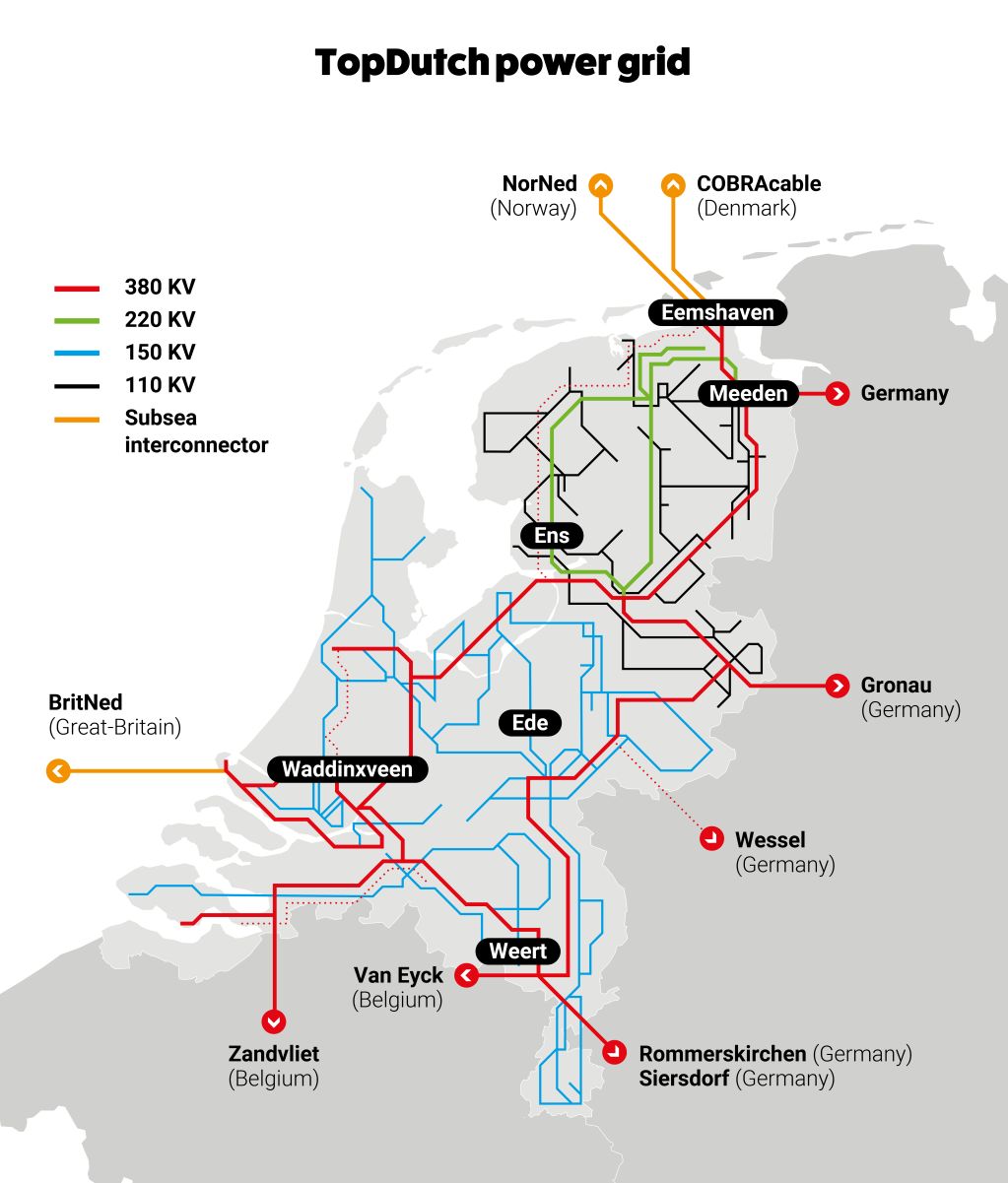
3. Leading the transition to a hydrogen economy
TopDutch is Europe’s first hydrogen valley, and is unique in the only cluster in the world developing an integrated hydrogen value chain: From innovation, to manufacturing, production and transportation, to applications in industry and mobility. We will continue to lead Europe’s hydrogen economy by fulfilling a $10 billion joint investment agenda by 2030.
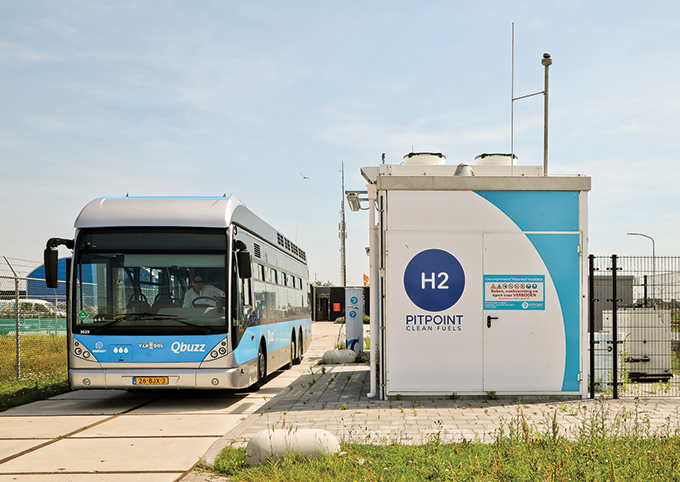
- Born on Europe’s largest natural gas reserve, we will be the first region to proactively conclude natural gas extraction, leaving about 70bn USD of fossil fuel in the ground by 2024, and are instead upgrading and expanding our extensive transportation network.
- By 2025, the TopDutch region will be home to 169km of hydrogen pipelines.
- These will connect to a further 6,800km of pipelines across the Netherlands, Germany, Belgium and France by 2030.
- The Northern Netherlands also has access to natural hydrogen storage locations in salt caverns. The Netherlands has the 2nd largest salt cavern storage capacity in in Europe – up to 150 PJ – of which 72% is in the TopDutch region.
Thanks to our ambition, infrastructure and knowhow, we were the first region to be selected as a ‘Hydrogen Valley’ by Europe’s Clean Hydrogen Partnership. Led by our leading triple-helix ‘New Energy Coalition’, and fueled with a €20 million subsidy and a €70 – 80 million public-private investment, the project started in 2020.
Over six locations in the TopDutch region, HEAVENN is a large-scale program of 13 demo projects bringing together core elements: production, distribution, storage and local end-use of hydrogen (H2) into a fully-integrated and functioning “H2 valley”. With the project now in full-swing, we are acting as a blueprint for replication across the world, and exporting our knowledge to other ambitious regions.
Major multinationals including Engie, RWE and Shell, local energy heavy-hitters such as Gasunie, and our ambitious state are collaborating on an ~$10 billion hydrogen production, storage and transportation joint investment agenda, allowing us to power Europe’s future economy with 100PJ of hydrogen p.a. by 2030. Major projects include:
- HEAVENN: A large-scale program of demo-projects, this €90-100 million cross-chain cluster development plan led us to being designated at Europe’s first ‘Hydrogen Valley’. Making up 13 individual projects across production, distribution, storage and end-use of hydrogen, it now serves as Europe’s blueprint for a green hydrogen economy across the value chain.
- HyStock: The first of four planned converted salt caverns – connected with an above-ground plant and our transportation network – will be available to store 200 GWh of hydrogen by 2028.
- Ten noorden van de Waddeneilanden: Already endowed with an existing submarine natural gas pipeline and a planned 700MW capacity wind farm, in March 2023 the North of the Wadden Islands area was designated for the world’s largest offshore wind-to-hydrogen project. The 500MW offshore production and transportation green hydrogen project should be operational by 2031.
- NortH2: A consortium of Eneco, Equinor, RWE and Shell aim to produce, store and transport 4GW by 2030 (and 10GW by 2040) of green hydrogen. They will do this by investing in large-scale offshore wind farms, an electrolyzer and a smart storage and transportation network beginning in the TopDutch region, and stretching across Northwestern Europe.
4. Smart researchers, students and talent
TopDutch offers an energizing environment for innovation in CleanTech. Our open and connected knowledge networks facilitate breakthrough advancements from fundamental science to market. We’re educating the green energy talent of the future, and upskilling the extensive gas knowledge and technical expertise we already host.
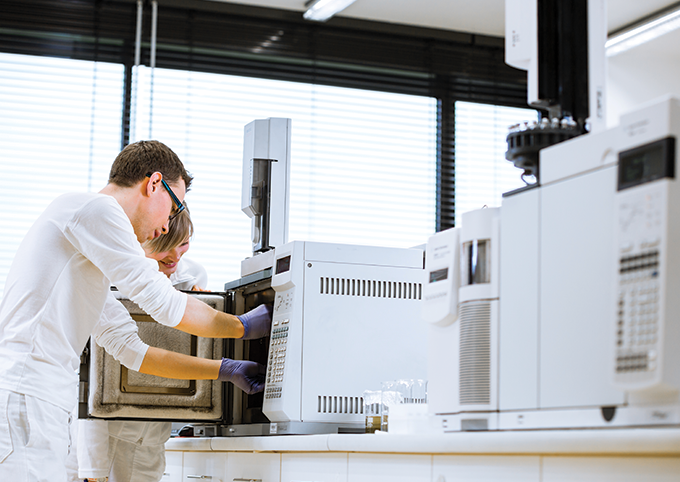
Innovation projects jointly focused on developing new applications for green energy technologies include:
- EnTranCe is a living lab for energy transition where entrepreneurs, authorities, scientists and researchers further develop their ideas, enabling them to arrive at working solutions. They offer state-of-the-art shared testing facilities and technical for start-ups, established companies and (international) consortia looking to validate a product, service or process that will help accelerate the energy transition. Shared facilities here include the Hydrohub MegaWatt Test Center, and the Green Hydrogen Booster SME ‘test garden’.
- Mobility is an innovation center for smart and green mobility. They offer companies, government institutions, students and researchers the opportunity to jointly develop, test and apply smart and innovative solutions for mobility in the TopDutch region.
- EnergieCampus Leeuwarden is an entrepreneurial community for sustainable business. The campus offers space for students, start-ups and established firms to experiment, knowledge share and do business.
- NXT Airport is a living lab dedicated to smart and sustainable aviation. An initiative of our Groningen Airport Eelde, it provides business, government and academia with shared research and testing grounds. Their ‘Power Up’ initiative is exploring electric aviation, and helps businesses enter into innovative partnerships in the field of battery technology, electric aircraft engines and charging systems. They are currently developing an electrolyzer to produce green hydrogen as an emission-free energy carrier for light aircraft, drones and ground equipment.
- HyDelta: Our Hanze University of Applied Sciences, New Energy Coalition and Gasunie are collaborating with other Dutch parties on the HyDelta national research program. Focusing on 6 work packages, they aim to empower the hydrogen economy by resolving technical, scientific and social barriers.
- 17,000 vocational, applied science and research university students are trained for a role in the energy system per annum, and graduate into the TopDutch workforce ready to change the world.
- We have the best knowledge cluster dedicated to the energy transition. Dedicated education institutions include Energy Academy Europe, Energy Delta Institute, and Greenwise Campus from the University of the North.
- Dedicated vocational training on hydrogen technologies is offered in the Northern Netherlands to fuel the hydrogen industry.
- We have an abundant supply of more than 15,000 experienced workers from the domestic natural gas industry which will scale down over the next three to five years.
- The Netherlands has the world’s most proficient non-native English speakers among non-English-speaking countries. Regulators accept English documentation and disputes are settled in the English-speaking Netherlands Commercial Court.
5. Ambitious complimentary industries fueling a system-level energy transition
The TopDutch region is determined to be the Energy Transition Capital of Europe. We’re not only generating the energy needed to fuel the sustainable transition, but also the technologies that will accelerate demand for green energy in our existing industries, and the applications that will make sustainable systems smarter.

- From its location in the Hydrogen Backbone Delfzijl, our chemical companies produce bleach, green methanol, amongst others with feedstock from its on-site 20MW electrolyzer. Demand is growing rapidly, so this will soon scale-up to a 100MW electrolyzer.
- In its Emmen location, a 4MW electorlyzer and the GETEC ‘green steam’ gas turbine will directly connect to our chemical and heavy industry companies via a newly constructed pipeline.
- The AI Hub Northern Netherlands (AI Hub NNL) aims to make the TopDutch region a testing ground for concrete applications of Artificial Intelligence (AI). The coalition of partners are building a roadmap for AI in the energy transition. This roadmap allows to identify knowledge gaps in this sector as well as knowledge institutes in the AI domain in the Northern Netherlands. By bringing the two sides together we will accelerate the energy transition through efficiency gains and smarter energy systems. Examples of projects include:
- The development of a prediction mechanism for imbalanced prices in cooperation with AI Hub and Repowered
- The development of an algorithm for demand response systems in various buildings in cooperation with Sustainable Buildings.
- Our island of Ameland is one of the two ‘pilot islands’ in the European Union’s IANOS research program. We are contributing to integrated solutions for decarbonization and smartification of islands by developing a reliable and sustainable smart grid, integrated with a Virtual Power Plant (VPP) based on artificial intelligence.
- The Netherlands’ mobility target is to sell only zero-emission vehicles by 2030(BEVs or FCEVs) and have 3,000 heavy-duty FCEVs on the road in the Netherlands by 2025. To support that, we are accelerating a number of demand- and supply-side policies including the recent construction of 2,000 charging points across the provinces of Groningen and Drenthe, and the deployment of 20 new hydrogen-fueled buses in the region.
- We produce several new energy vehicles, including the cult-classic EV three-wheeler Carver, and Europe’s first ever hydrogen truck plant.
- We are accelerating innovation in 6 key competencies across the battery technology value chain:
- Battery concepts: materials and cell designs
- Equipment for cells, modules and packs
- Electric mobility: heavy duty and flying
- Stationary storage: grid stability
- Safety and data security
- Circular batteries: re-use, second use and recycling
- Researchers in our world-renowned knowledge institutions are deepening fundamental science for battery concepts.
- Zernike Institute for Advanced Materials applies operando spectroscopy techniques in catalysis and materials research to fundamentally or industrially interesting catalytic processes and materials, providing unprecedented insights in catalysts properties and reaction mechanisms, including electrochemical processes in batteries and fuel cells.
- ZIAM director, Prof. dr. Moniek Tromp, is steering committee member of BatteryNL – a coalition academics, high-tech start-ups, multinationals and societal partners from across TopDutch and the wider Netherlands. Together, the consortium are developing the next generation of batteries by investigating and improving the electrode-electrolyte interface using scalable technologies.
- Top-100 University of Groningen hosts world-class research in the field of battery technologies, particularly from the Advanced Production Engineering faculty, the Energy and Sustainability Research Institute and the Stratingh Institute of Chemistry.
- Together, the TopDutch Batteries ecosystem is a powerful catalyst for new technologies, solutions and applications. Examples of key players in battery innovation coming out of the TopDutch region include:
- Ocean Grazer – A spin-off from the University of Groningen developing utility-scale energy storage.
- EVoltify – A flexible, modular and adaptable mobile EV charging solution.
- SuWoTec – Who have created a bio-based and entirely circular battery that serves as a buffer between the intermittent electricity produced by solar PV or wind turbines.
6. Unique triple helix collaboration
In the TopDutch region, our natural culture of cooperation facilitates unique triple helix collaboration between government, business and knowledge institutions. With and within the New Energy Coalition, we develop breakthrough knowledge, innovation, applications, processes and leadership needed for a sustainable transition.
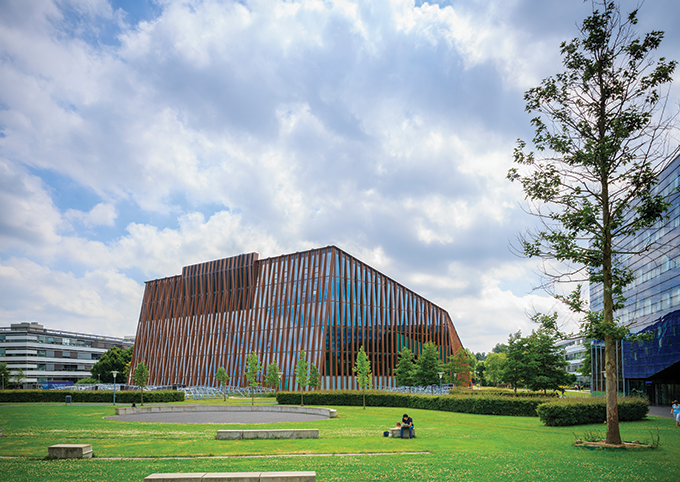
- The TopDutch region has the best knowledge cluster dedicated to the Energy Transition in the world, in which research universities, universities of applied sciences and vocational education institution work together with industry and government.
- The New Energy Coalition supports many energy projects in and across the region, such as Estrac, Ensystra, North Sea Energy Program, Energy Venture Lab, IDEA, InVesta, Making City, LNG Pilots, CLINSH and TSO2020.
The TopDutch region showcases great collaborative power in its industry and investment agendas leading regional business, knowledge and government partners towards shared visions. These collaborations and agendas can be found in the TopDutch Hydrogen Alliance, Hydrogen Valley and in our Green Chemistry cluster Chemport Europe.
- Overall target to have 49% less greenhouse gas emissions by 2030 compared to 1990 levels. International lobby by the Netherlands to further increase target to 55% by 2030 and climate neutrality by 2050.
- Electricity target of 84 TWh of renewable energy on the grid by 2030, covering 80% of today’s electricity demand.
- Electrolysis target of 3 to 4 GW nationwide by 2030, enlarging the potential hydrogen supply.
- Strong support for off-grid power purchase agreements for local industry, if required.
- Mobility target to sell only zero-emission vehicles by 2030(BEVs or FCEVs) and have 3,000 heavy-duty FCEVs on the road in the Netherlands by 2025.
- Through the ‘National Growth Fund’, the Dutch government is investing €20 billion between 2021 and 2025 in two tracks aimed at sustainable economic development of the Netherlands: Knowledge Development; and Research, Development and Innovation.
- As part of the EU’s Just Transition Fund, € 330 million will become available to support innovation to accelerate the energy transition in the Northern Netherlands, which can subsize up to 50% of investments in projects.
- The Nationaal Programma Groningen has allocated €1.15 billion in seed capital to invest in socio-economic development projects in the Province of Groningen, including in projects that will accelerate the energy transition and the circular economy of the TopDutch region.
- HyNorth is a public-private consortium dedicated to strengthening and growing our hydrogen cluster, and supporting our partners with research, networking and business development programs.
- The national government provides attractive incentives for companies active in sustainable development. This includes significant tax credits for R&D and a 9% effective tax rate on profits from self-developed innovations, as well as stimulation subsidies to support companies on their personal energy transitions.
Stories that show you what it means to be part of TopDutch

Developing the hydrogen capital of europe
Over the next five years, the Northern Netherlands will become the leading hub in one of the greatest transformations Europe has ever faced: the transition…
Over the next five years, the Northern Netherlands will become the leading hub in…
Read more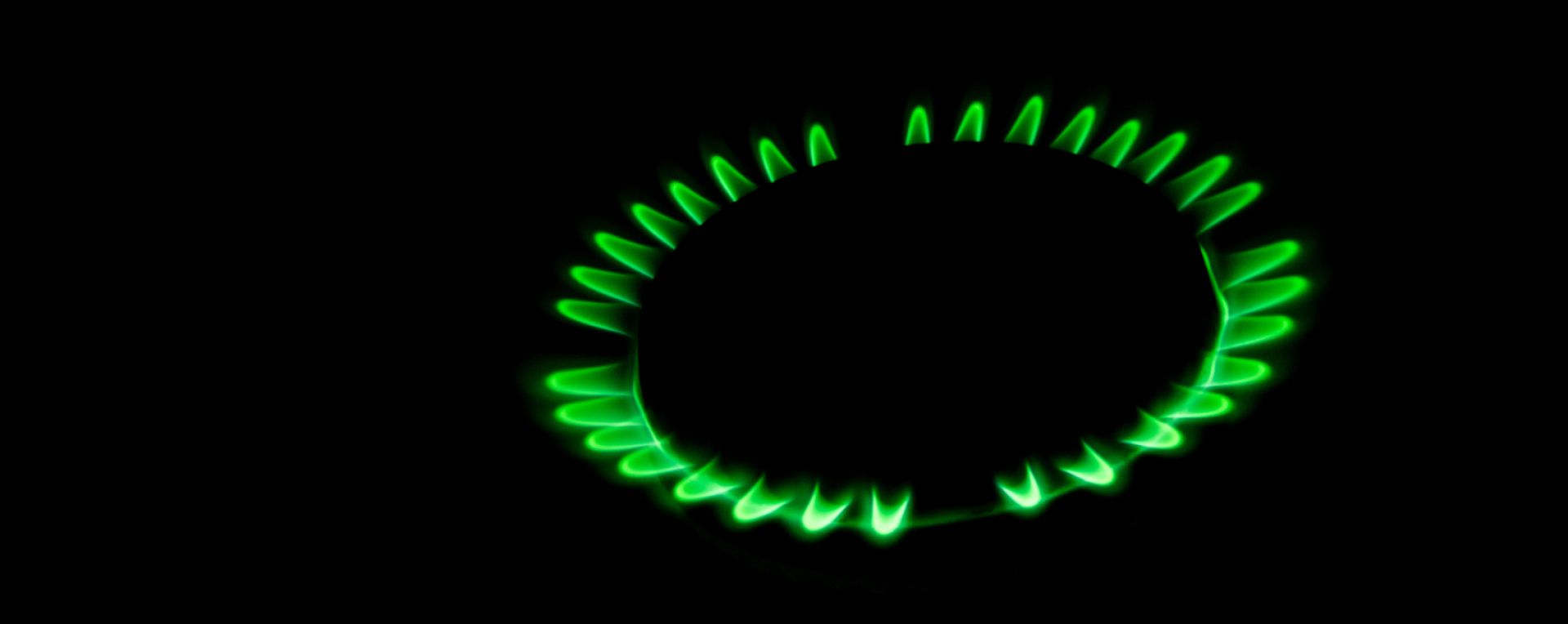
A sustainable energy drive is sweeping over the Nothern Netherlands
The Northern Netherlands is turning the energy transition from words into actions. Initiatives are taking place across the region to make buildings and even…
The Northern Netherlands is turning the energy transition from words into actions. Initiatives are…
Read more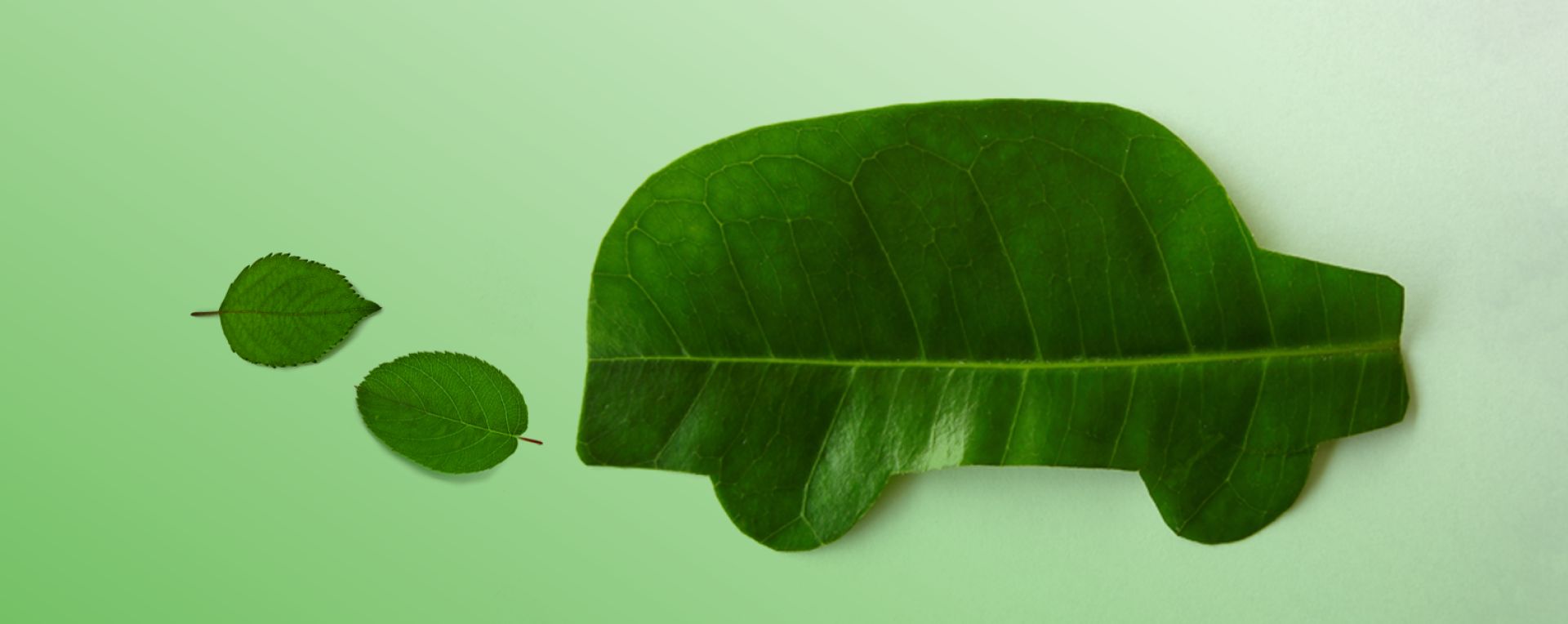
Inside the race to zero emission public transport
Few public transport companies in the world have higher climate ambitions than Qbuzz in Groningen and Drenthe. With 186 zero-emission buses (164 electric and 22 hydrogen)…
Few public transport companies in the world have higher climate ambitions than Qbuzz in…
Read moreGet started

1. Get in touch
Through our TopDutch contact page, by email or direct to your dedicated industry project manager, get in touch to start the conversation.
2. Receive industry bidbook
Once you’ve confirmed you are interested in more information about investment in the region, we’ll be happy to send our industry specific bidbook to you.
3. Alignment meeting
We’ll schedule a meeting with your team and our regional dedicated project team to identify your needs and align objectives.
4. Receive company-specific bidbook
Now we understand your objectives, we’ll provide you with a bidbook tailored to your company’s needs.
5. Fact-finding trip
We’ll schedule a fact-finding trip in our region for your team to introduce you to relevant useful contacts in both the private and public sector and organize visits for site locations.
6. Investor roundtable
For investments requiring partnerships and co-investment, we’ll organize an investor roundtable with relevant key decision-makers.
7. Kick-start business development
Once you’ve confirmed you’ve reached a decision to invest in our region, we’ll kickstart your business development process so you’ll fully benefit from our fast procedures.
Call me back
Please feel free to fill out the “Call Me Back” form below, and we’ll be delighted to get in touch with you at your convenience.
